We may earn revenue from the products available on this page and participate in affiliate programs. Learn more ›
I’ll be honest. When it comes to the 6.5 Creedmoor vs 243 Winchester, I lean towards the 243. When I was a kid my father took me with him to buy his first deer rifle. He walked out of the sporting goods store with a 243. He used that rifle for the rest of his life to take a lot of deer and a lot of groundhogs. His success endeared me to 243 and its capability as a cartridge for big game and varmints. But today the 243’s popularity has been diminished by the 6.5 Creedmoor. Is the Creed really a better option? Let’s dive into the data to find out.
6.5 Creedmoor vs 243: Table of Contents
243 Winchester
6.5 Creedmoor
6.5 Creedmoor vs 243 Winchester: Velocity Comparison
6.5 Creedmoor vs 243 Winchester: Energy Comparison
6.5 Creedmoor vs 243 Winchester: Recoil & Trajectory Comparison
6.5 Creedmoor vs 243 Winchester: Field Experience
Which Cartridge is Best?
243 Winchester
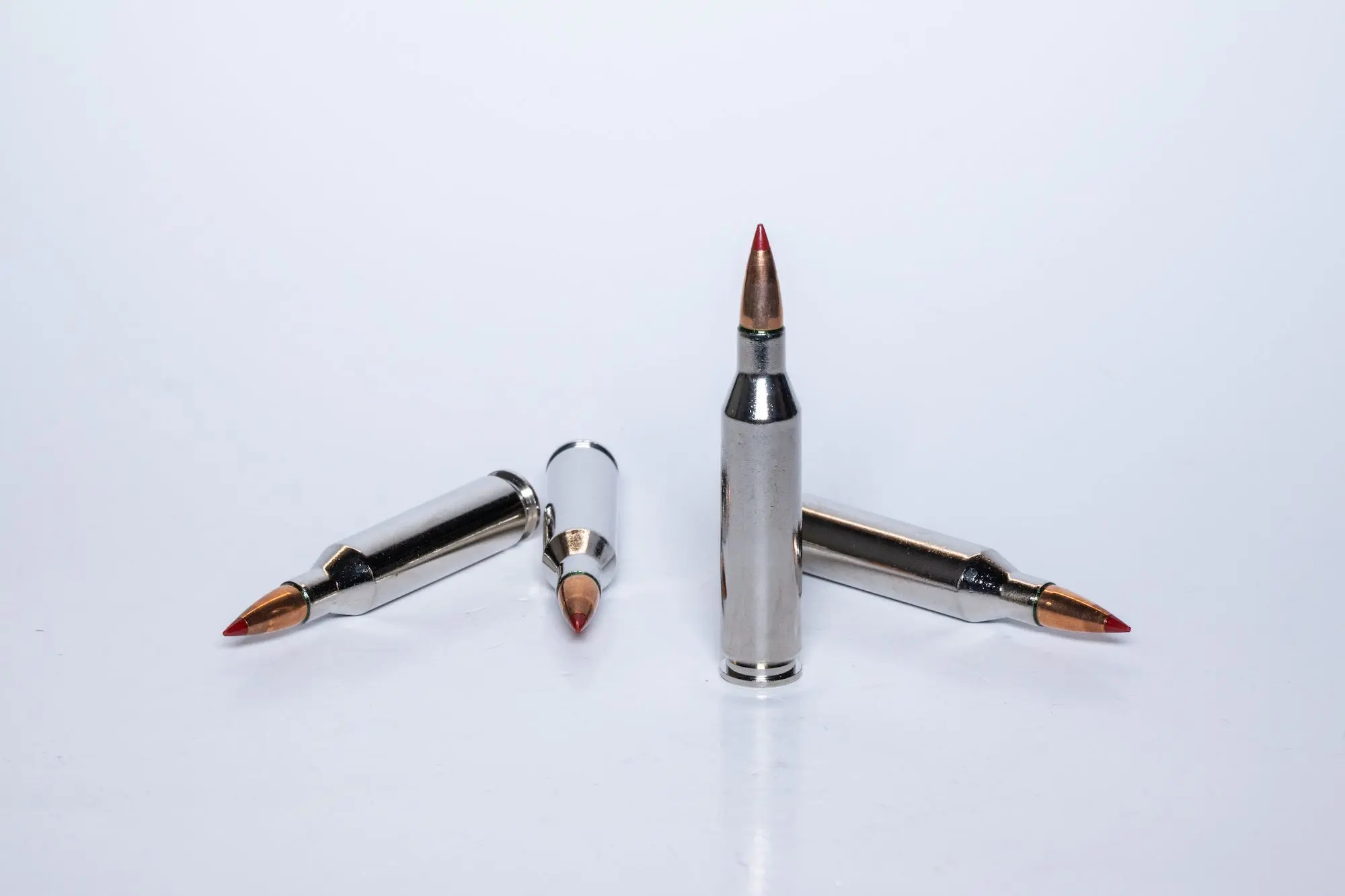
The 243 Winchester has been one of the most popular deer cartridges for more than a half-century because it works. Richard Mann
The 243 Winchester was an immediate sensation. It was introduced in 1955 at about the same time Remington introduced their 244 Remington. The 244 held more gunpowder and had a slight velocity advantage over the 243. However, Winchester was smarter. Remington’s 244 had a 1 in 12 rifling twist and Winchester specified a 1 in 10 twist for the 243. This allowed it to better stabilize 100-grain bullets, and most deer hunters thought they needed a 100-grain bullet.
Remington tried to correct this by renaming the 244 the 6mm Remington and giving it a faster twist rate. It was too late, the 243 had run off and left it. Not only did the 243 Winchester kill the 244/6mm Remington, it greatly cut into the sales of the 257 Roberts, which was also considered a great, both-ways rifle for varmints and big game.
The 243 uses a .308 Winchester case necked down to accept a 0243-inch (6.17mm) diameter bullet. It’s loaded to a maximum average pressure (MAP) of 60,000 psi, with an instrumental velocity of 3,880 fps with a 55-grain bullet and 2950 fps with a 100-grain bullet. Though many deer hunters foolishly believe the caliber too small, and a 100-grain bullet too light for deer, in the latter part of the last century it was a very popular deer cartridge. Oddly today, many relegate the 243 to kids or women due to its light recoil. However, men can kill deer with it too. Also, because it can make lightweight bullets scream, it’s fantastic for hunting groundhogs, rock chucks, and various predators.
6.5 Creedmoor
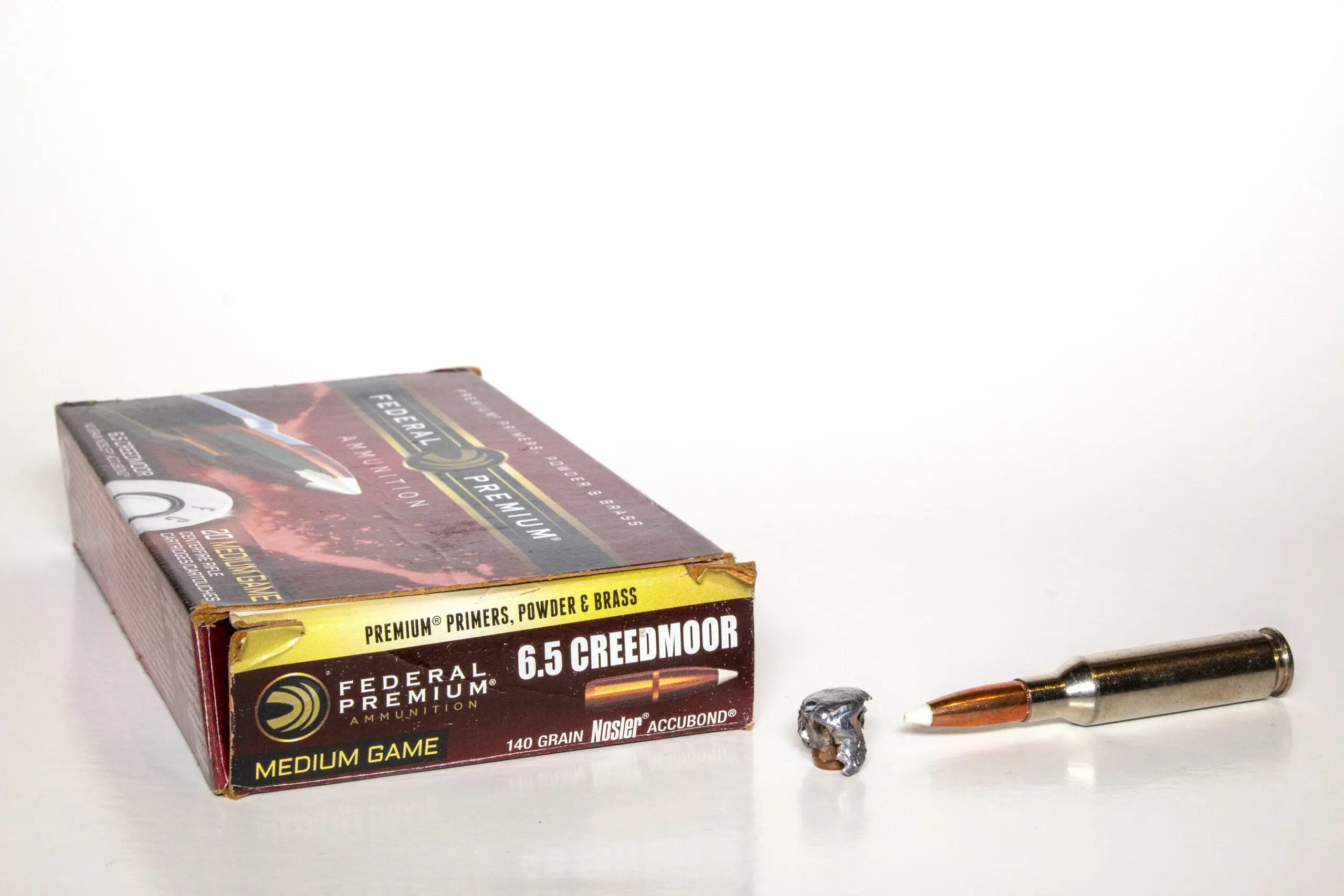
Nosler’s 140-grain AccuBond load from Federal is great for big game hunting. Richard Mann
The 6.5 Creedmoor was not an immediate success. It was introduced in 2007/8, primarily for long-range competition. Essentially mirroring the ballistics of the 260 Remington, which also had roots in competition shooting, its advantage was the same advantage the 243 had over the 244—it had a faster twist barrel.
Though many claim the 6.5 Creedmoor owes its success to a savvy marketing campaign by Hornady, in truth it mostly owes its success to the movie, American Sniper, which came out in 2014. Much like the Dirty Harry movies drove interest in the 44 Magnum, the movie about Navy Seal Chris Kyle made everyone want to shoot stuff at stupid long distances. When these want-to-be snipers began researching rifle cartridges, they came across the competitive success of the 6.5 Creedmoor, and the cartridge was pushed to stardom.
It used to be when a manufacturer introduced a new rifle they chambered it for the 30/06, 270, 308, and 243. Now most companies chamber new rifles in 6.5 Creedmoor. It’s one of the most popular centerfire rifle cartridges. The 6.5 Creedmoor is loaded to a MAP of 62,000 psi, with an instrumental velocity of 2900 fps for a 120-grain bullet and 2690 fps for a 140-grain bullet. Its combination of light recoil and flat trajectory have made it very popular with hunters who want to reach out.
6.5 Creedmoor vs 243 Winchester: Velocity Comparison
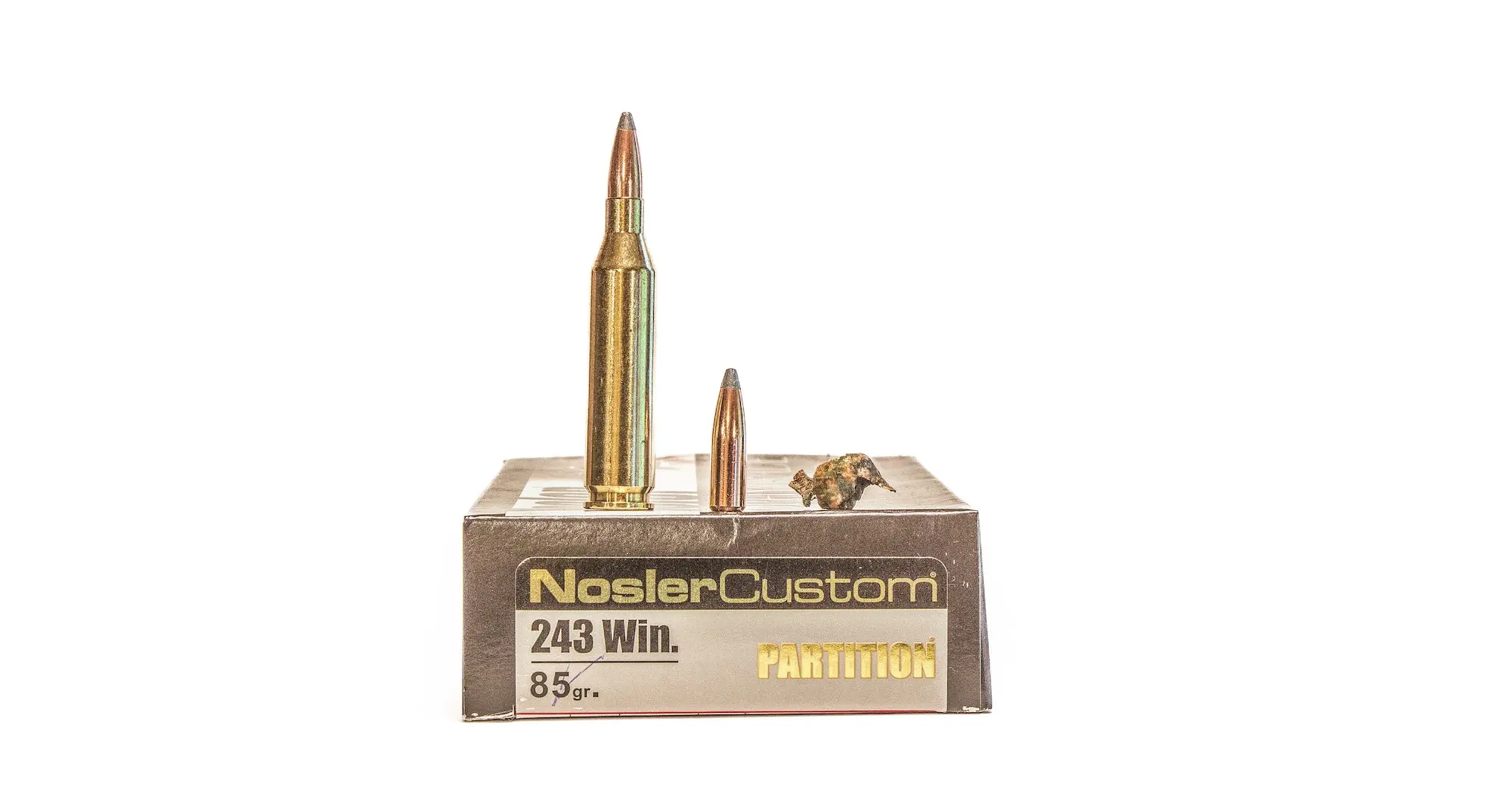
The 85-grain Nosler Partition at more than 3200 fps is a fantastic big game load for the 243. It kills way out of proportion to its size. Richard Mann
A straight-up velocity comparison is really only practical when you compare bullets of the same weight. Hornady’s fastest 95-grain load for the 243 Winchester has an advertised velocity of 3185 fps. The only 95-grain load they have for the 6.5 Creedmoor has an advertised velocity of 3300 fps. Hornady’s 95-grain 243 load is loaded with a big game bullet and their 95-grain 6.5 Creedmoor load is loaded with a varmint bullet. Ironically, the ballistic coefficients are almost identical.
Hunters are more likely to compare varmint load to varmint load, and big game load to big game load. Hornady’s 58-grain V-Max load for the 243 has a velocity of almost 4000 fps. That’s 21 percent faster than Hornady’s 95-grain varmint load for the Creedmoor. Based on my experience, the best big-game load for the 243 Winchester is the 85-grain Nosler Partition—more on that in a moment—and in Nosler’s Trophy Grade ammo line that bullet has a velocity of 3225 fps. I also think one of the best big game loads for the 6.5 Creedmoor is Nosler’s 140-grain AccuBond—more on that too—and in Nosler’s Trophy Grade line of ammunition, it has an advertised velocity of 2650 fps.
With the same weight bullet, the Creed has the advantage, but from a pure velocity standpoint, the 243 Winchester wins out. From a hunting standpoint velocity is not everything, but it matters, mostly because velocity is what makes bullets work. A faster varmint bullet will provide more dynamic kills, and a faster big-game bullet gives hunters a wider range of impact velocities to work with.
Advantage: 243 Winchester
6.5 Creedmoor vs 243 Winchester: Energy Comparison
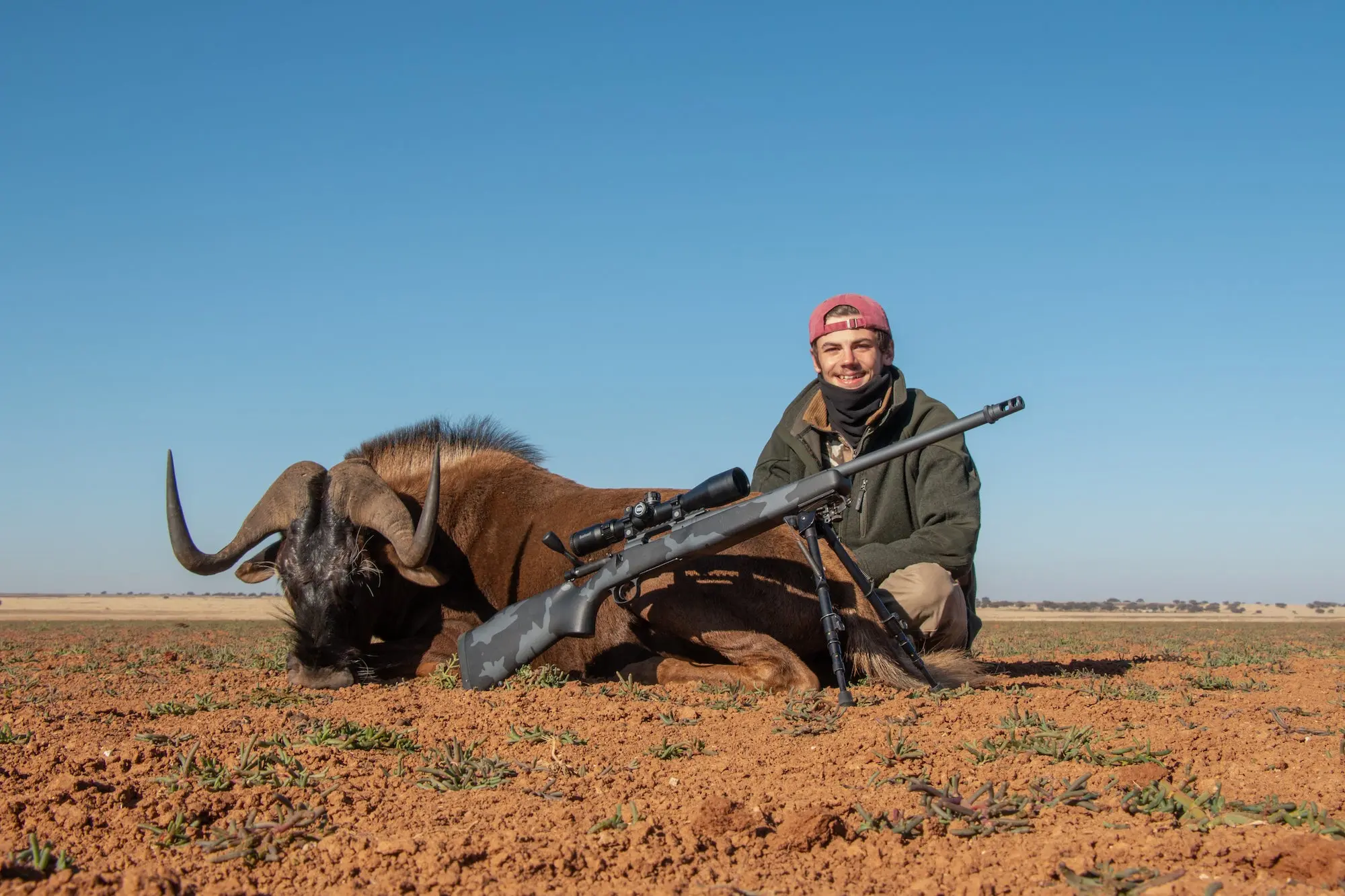
The author’s son took this black wildebeest at a bit beyond 200 yards with a 6.5 Creedmoor and a Controlled Chaos bullet. Richard Mann
Some believe kinetic energy is the best factor to determine a cartridge’s ability to cleanly kill game. There’s no doubt it plays a part in the killing formula—the problem is, no one really knows what the killing formula is. However, most agree that the harder a bullet hits, the better.
If you compare what I consider the two best big game loads for these cartridges, you’ll see that at 100 yards the 6.5 Creedmoor impacts with about 1900 foot-pounds, and a bit more than 1200 foot-pounds at 400 yards. The 243 Winchester does not hit as hard. At 100 yards it will deliver about 1600 foot-pounds and only about 800 foot-pounds at 400 yards. The 6.5 Creedmoor wins in the energy department, partly because it can launch a heavier bullet, and partly because those high-BC bullets retain velocity—and energy—better.
Advantage: 6.5 Creedmoor
6.5 Creedmoor vs 243 Winchester: Recoil & Trajectory Comparison
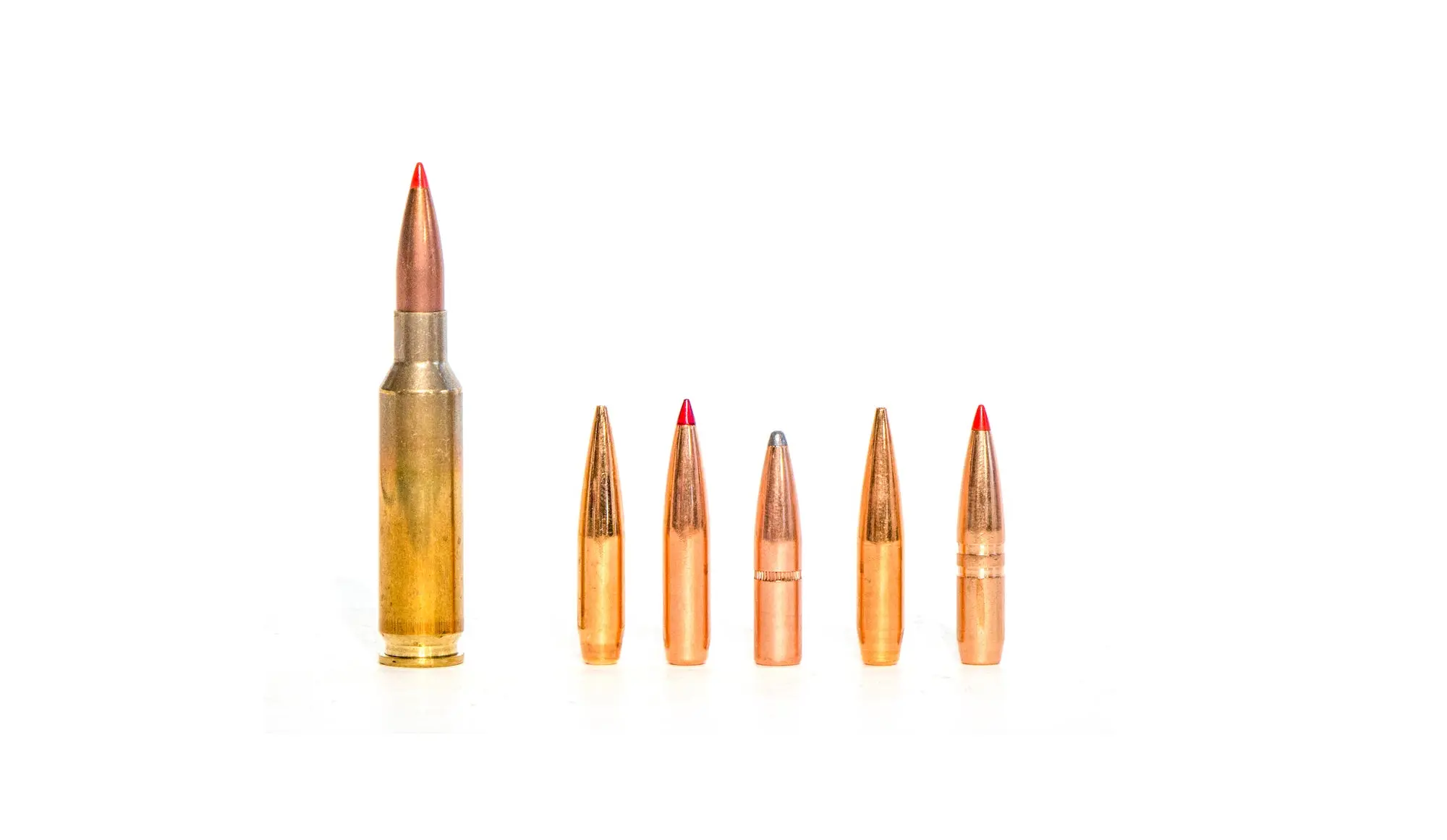
One thing that sets the 6.5 Creedmoor apart is the vast selection of high-BC 6.5mm bullets. The Creed is not a high-velocity cartridge but these bullets retain velocity very well.
One of the most appealing facets of the 6.5 Creedmoor is how flat it shoots compared to the recoil it generates. There’s no question that some cartridges shoot the same or heavier bullets flatter, but they do so with an increase in recoil. With a flat shooting big game load, the Creedmoor will smack you with only about 13 foot-pounds of recoil. The 243 recoils about 15 percent less.
As for a trajectory, there are several ways to look at these two cartridges. The first is to compare the maximum point-blank range, which is the distance that both cartridges can be sighted in so that the bullet never rises or falls more than three inches above or below the line of sight. Simpler put, it’s how far either cartridge can push a bullet in one-third of a second. The 85-grain Partition from the 243 Winchester has a point-blank range of 300 yards. The 140-grain Nosler AccuBond out of the Creedmoor has a point-blank range of 275 yards.
As much as the Creedmoor is touted for its flat trajectory, it cannot overcome the velocity advantage of the lighter and faster 243 Winchester bullet. Even at 1,000 yards, the 85-grain Partition drops less than the 140-grain AccuBond. If we compare the heavier and higher BC 90-grain AccuBond out of the 243 Winchester, which is also a very good big game bullet, it shoots even flatter.
But trajectory is not everything. When it comes to hitting what you’re shooting at, wind drift matters too. That’s where the higher BC bullets from the Creed really shine. With a consistent 90-degree, 10 mph crosswind, at 300 yards the 140-grain bullet from the Creed will drift about an inch less than the 243’s 90-grain AccuBond. At 1,000 yards it will drift about 20 inches less.
Advantage: Tie
6.5 Creedmoor vs 243 Winchester: Field Experience

Though the 6.5 Creedmoor isn’t thought of as a varmint cartridge, Hornady’s 95-grain V-Max load hammered these two coyotes. Richard Mann
Numbers are how humans compare everything from cartridges to NFL quarterbacks. However, I don’t think numbers are a substitute for field experience. I’ve done a lot of hunting with a 243 Winchester and a good bit with the 6.5 Creedmoor. Enough to offer some practical comments on their in-the-field performance.
The lightweight varmint bullets out of the 243 Winchester are wickedly explosive on smallish critters. Out to 400 yards, I’ve seen various 243 Winchester big-game bullets work to perfection on deer and pronghorn. My wife used a 243 and an 85-grain Nosler Partition in Africa to take gemsbok, wildebeest, and impala, all with one shot each. (Now you see why I respect that bullet so much.) For all manner of varmints and for small to medium big game, I think the 243 Winchester is an ideal cartridge inside 450 yards.
Because my son likes the 6.5 Creedmoor, I’ve seen a lot of animals taken with it. His first was a blesbok at more than 500 yards in a gale-force wind. Inside 400 yards, and on game up to 500 or so pounds, I’ve never been able to tell the difference in the performance of the Creed and the 243. I have taken some larger beasts with the Creed than I have the 243. Even with some bad shooting on a Newfoundland hunt, I took a big black bear, a woodland caribou, and a moose using a Creed and Nosler’s 140-grain AccuBond.
Advantage: Tie
Read Next: Dude, the 6.5 Creedmoor Sucks!
Which Cartridge is Best?
I do think that with animals heavier than 500 pounds, and shots beyond 400 yards, the 6.5 Creedmoor should have an advantage. However, I seriously doubt I’ll ever be able to prove it because I have no intention of shooting at any unwounded big game animal that far away, with any cartridge.
I do like the 6.5 Creedmoor—it’s very comfortable to shoot—and it’s my son’s favorite rifle cartridge. I also think the Creedmoor is overhyped and often used outside its practical limits. If I wanted to shoot competitively at distance, the Creed or the 6.5 PRC would be my cartridge of choice. However, for most of the varmint, predator, and big game hunting I do, the 243 Winchester should serve me just as well. I think Dad knew what he was doing when he bought that 243 so many years ago.


